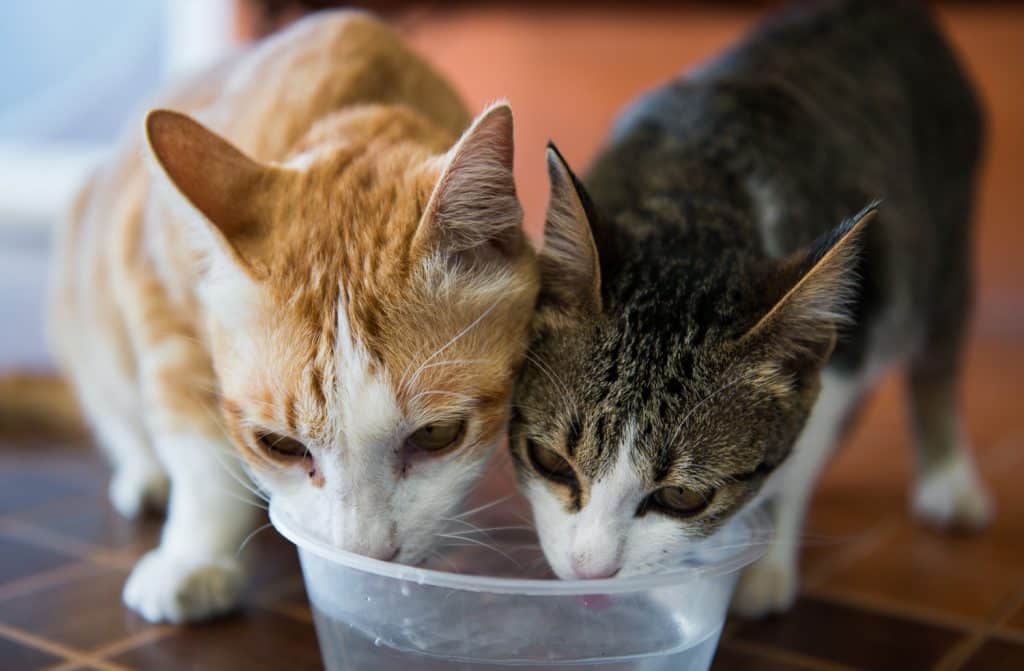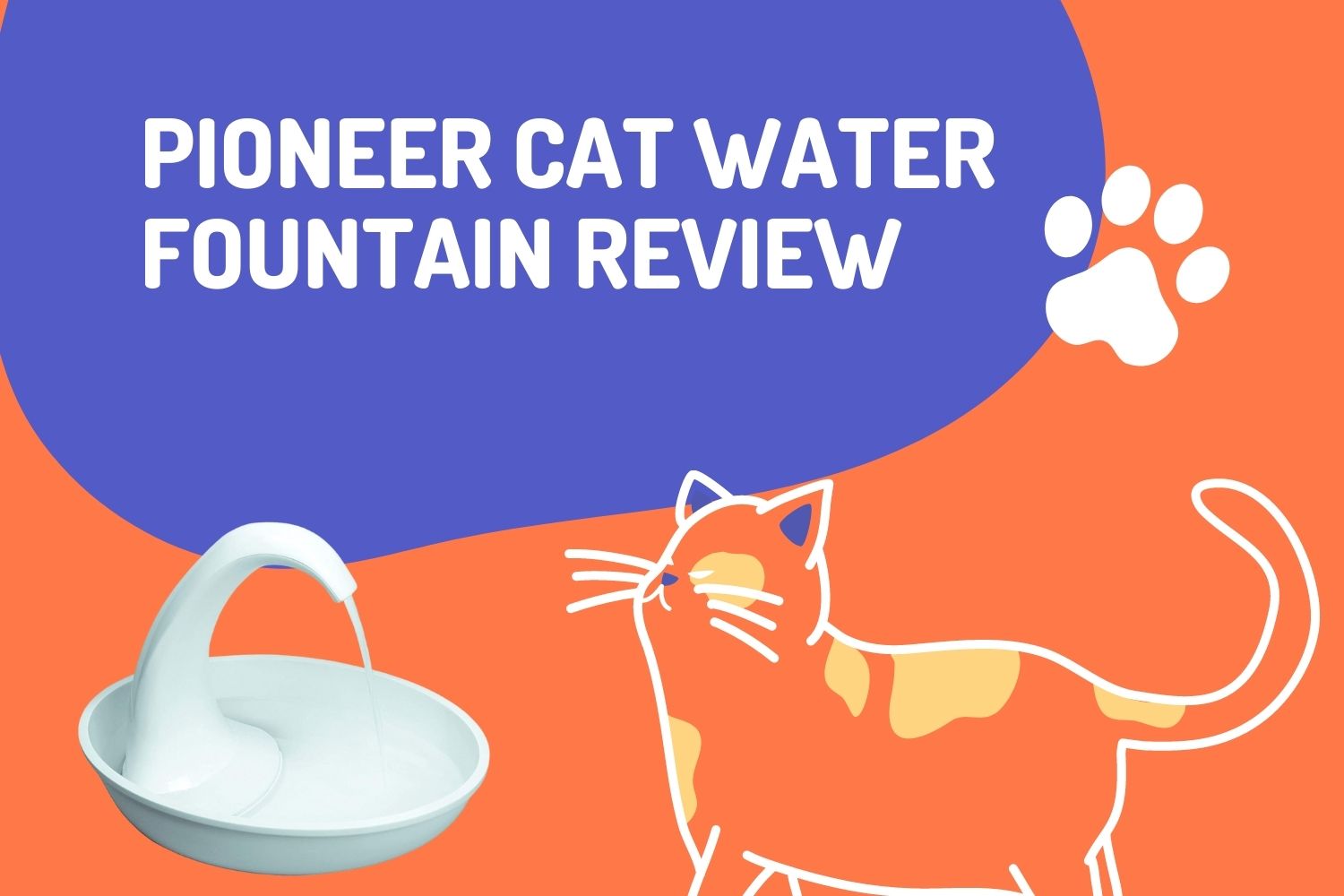
Usually, a cat owner’s common question would be, “why is my cat not drinking water?”
Having the opposite of this issue now may be causing a little confusion. Not to worry!
You can’t always be sure about their behavior with cats, neither can you predict when it will change. But there is one thing, if your cat’s behavior has changed, they may be trying to tell you something.
Cats don’t let us know when they’re feeling unhealthy or ill. But, their dietary habits tell us plenty. And if your cat’s hydration habits have changed, it may be time to take a more in-depth look into how they’re feeling.
How Do Cats Stay Hydrated?
Feral cats or strays will find bodies of water to keep themselves hydrated. But for a domestic cat, here are a few common tricks cat parents use to help them stay hydrated:
- Keeping water bowls in every room of the house.
- Switching the water every day for freshwater
- Feeding wet food instead of dry food.
- Using a water fountain so the cat can have a supply of fresh water.
- Using flavored water if the cat doesn’t like to drink.
All the tactics mentioned above work well. However, since your problem is that your cat is drinking too much water, there could be some health reasons what may be prompting your cat to look for the nearest watering hole.
As a cat owner, you must learn how to hydrate a cat with a syringe? To save your cat in an emergency. Motion sensor cat water fountain is a great addition. It can save on bills and provide fresh as well as clean water to cats.
Why is My Cat Drinking So Much Water?
Before we get into health reasons, let’s figure out an environmental cause. If your cat is an outdoor cat, it could be that the hot summer may be making it thirsty. If your cat is happy and healthy, despite drinking a lot of water, that could be the one reason.
Another reason could be that your home is too warm, making the cat want to drink more water. If you’re also feeding your cat only dry food, this may also be why they’re seeking water; to stay hydrated.
But, if it’s none of the above situations, the chances are that your cat may not be feeling well. The following health issues more commonly cause increased thirst, also known as polydipsia:
- Urinary tract disease
- Hyperthyroidism
- Diabetes
- Liver disease
- Kidney failure or kidney dysfunction
- Compensation for increased water loss caused due to diarrhea or vomiting
Unfortunately, there’s no age limit as to when the above health issues may arise. Your cat can become ill at any age, so it’s best to keep an eye out if they start showing signs of trouble.
Before taking your cat to the vet, evaluate their average day habits of drinking and urinating water. Cats typically pee 2–4 times a day, although elements such as heat, diet, humidity, and previous water intake can affect their frequency. Cats should also drink an average of 60mls/kg each day, although this amount depends on their age and weight. So, if you have a cat that’s about 4 kg, they should drink about 240mls each day, which is equal to one cup.
If your cat starts to urinate more often and drinks more water than a cup, they may also display other signs of illness you might not have noticed before, such as:
- Lethargy
- Nausea
- Vomiting
- Diarrhea
- Constipation
- Weakness
- Poor appetite
Nevertheless, they may not show such signs at all. Either way, the only course of action to take here is to immediately take your cat to the vet.
Note down how your cat may be acting unusual and let the vet know if your cat received any recent medical treatment or vaccination. In short, offer the veterinarian as much information as possible to get an accurate diagnosis.
On the other hand, if your cat appears generally healthy, displays no change in behavior, and is the happy cat who you’ve always loved, then do not worry. After a checkup, your vet will most likely diagnose your cat’s increased thirst as an environmental after-effect. They will also advise you to keep an eye, but you will not need to be alarmed.
In inverse condition, you must also know how to hydrate a cat with a syringe? Because it may happen and should save your cat while providing liquid immediately.
A Note on Meowing While Drinking Water
While it might be cute for your cat to meow when they see you take out some freshwater to refill their bowl, be wary if they meow before and after drinking water.
There’s a difference between meowing and yowling. If your cat yowls after drinking water, it could be that the act of drinking could be causing pain in their kidneys. But, if your cat meows before drinking water, they may be having issues with the bowl or the water. Switch the water bowl for a ceramic or glass bowl, and place it in a comfy spot where they can drink water easily.
If your cat still meows after or before drinking water, this means they’re not feeling well.
What to Know about Cat Hydration
If your cat is still drinking a lot of water after all else, you will need to consider other options. For example, the food they eat may be over-salted. It could also be that your home is too warm. If your cat has a thick coat, this may be causing them to overheat.
For their food, if you give them home-cooked food, boiling a little chicken that’s free of any salt or spices will do the trick. Cats don’t care about the flavors we love anyway. But, if you feed your cat tinned food from the store, switch around with the brands until you find a new one that they like. But make this change gradually. Cats are creatures of habit who hate change. They will not take it kindly if they’re getting tuna and egg one day, and the other day, their food is chicken mush!
If you suspect they may be feeling overheated, take them to a groomer’s, so they can have their coat trimmed. Also, do your best to improve the airflow inside. Turn on some fans or turn the thermostat down to cool things at home. Your cat will thank you for it.
Final Thoughts
Cats aren’t naturally thirsty creatures. These are desert animals; they don’t require as much water, to begin with. But, despite their ancestral trait, they do need some amount of water to stay healthy.
Keep an eye on their water intake, and don’t hesitate to take them to the veterinarian if they start drinking too much or too little. When it comes to our four-legged friends, exercise caution.
Cats don’t show emotions, neither do they make it easy for us to know if they’re feeling ill. Getting them a regular checkup will not only allow you to update their health chart, but it may also just help you catch something that may have caused your cat harm in the future!
How to force a cat to drink water? It is a resource and step-by-step guide to keep the feline hydrated, especially when the pet refused to intake water.






